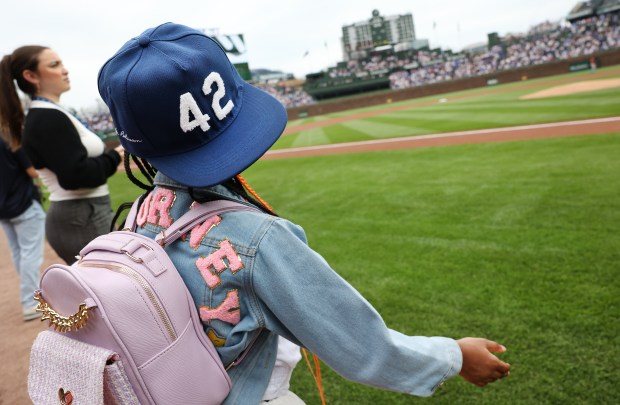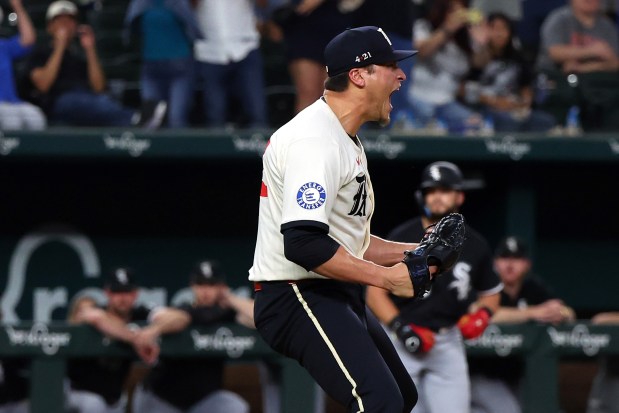On his first day managing the Chicago Cubs at Wrigley Field, Lou Piniella surveyed the ballpark from foul pole to foul pole.
And he saw that it was very good.
“This is a fun park to play baseball in,” Piniella said. “It really is. It’s like going on a golf course and having to use all your clubs. You’re not just going to play pitch-and-putt or driver-wedge. You’ve got to be able to use all your clubs.
“You’ve got to be able to putt because the greens are fast or slow or whatever, and it’s fun because of that. I can see where this is going to get very interesting as the summer goes on.”
Piniella helped make that summer of 2007 interesting with a volcanic eruption at Wrigley over a controversial call, delivering a cap-kicking tirade for the ages. The Cubs promptly turned their season around and went on to win the division title.
The rest of the story? Google it, sir.
Piniella’s description of Wrigley was as apt as any I’ve heard from a Cubs manager, player or executive. Its bipolar winds blow in some days and out on others, or even in and out on the same day, forcing general managers to try to create rosters that can win under any condition and managers to make daily strategic decisions on how the park will play— fast, slow or whatever.
Cubs manager Craig Counsell correctly acknowledged after Friday’s 13-11 win over the Arizona Diamondbacks that no other ballpark is as affected by the weather as Wrigley Field.
Temperatures in the mid-70s and 11-mph southwest winds welcomed Friday’s game, a stark reversal from the frigid, mid-30s temperatures and in-blowing winds of the Cubs’ last home series against the Texas Rangers.
The Cubs led the Diamondbacks 2-1 through 6½ innings. It was a nice duel between starters Colin Rea and Corbin Burnes and included a few defensive gems. The forecasted rain held off, and the pace of the game was good.
Photos: Chicago Cubs beat Arizona Diamondbacks 13-11 at Wrigley Field
Then the game suddenly reversed form and switched to supersonic speed, resulting in 21 runs total from the bottom of the seventh inning through the eighth. The Cubs scored five runs after the seventh-inning stretch to increase their lead to 7-1, endured a 10-run top of the eighth to trail 11-7, then scored six in the bottom of the inning and hung on to the two-run lead in the ninth.
The unsung hero was the poor operator of the old center-field scoreboard, who deserved a huge raise for replacing the numbers in the innings windows after every scoring change.
The pitching duel-turned-slugfest was still the talk of the ballpark Saturday on a colder, gloomy afternoon on the North Side, where the Cubs beat the Diamondbacks 6-2.
The 21 runs scored in two innings Friday was just as amazing as the last time it happened in a Cubs game, on Sept. 4, 1893. The Chicago Tribune headline in the following day’s edition read: “Pulled A Game Out Of The Fire.” The subhead was: “Anson’s Men by a Plucky Rally Save a Game Apparently Lost.”
If you substitute “Counsell’s Men” for then-manager Cap Anson’s team, it was deja vu all over again for the Cubs. They probably can count on a game like Friday’s every 132 years, so look for another one in 2157.
The 1893 Cubs, who were then known as the Colts, beat the Baltimore Orioles 15-10 at the West Side Grounds, a ballpark located at the corner of Polk Street and what’s now Wolcott Avenue.
The Tribune report that day started off with the teams upset with the plate umpire, who “tried everyone’s patience sorely by arriving ten minutes after the game should have been called, and was in hot water from start to finish, the visitors kicking frantically at each decision.”
The Orioles scored 10 runs in the top of the second, but the pitching quickly fell apart. The Colts came back with four runs in the bottom of the second and seven in the third to take an 11-10 lead.
It could’ve been worse for both teams. The Tribune reported that Colts pitcher Willie McGill and Orioles pitcher Sadie McMahon “escaped annihilation only through the desperate work of their fielders.” One of those fielders was Orioles shortstop John McGraw, who became a Hall of Fame manager.
The game story, which didn’t have a byline, ends by pointing out that the scoring stopped after the Colts scored a run in the sixth: “After this the Colts did not exert themselves.”
Baseball has changed quite a bit since 1893, but snarky commentary about our baseball teams in Chicago is pretty much the same.
There was another small-but-not-insignificant thing that tied Friday’s game to the 1893 contest — both were played in the daytime. Fans could experience the astonishing 21-runs-in-two-innings output and spend the rest of the night telling family and friends about the plucky rally.
Back in 1893, it would’ve been by word of mouth instead of texting, but the message would’ve been similar: “Can you believe it?”
The Cubs played a remarkable day game on May 17, 1979, a 23-22, 10-inning loss to the Philadelphia Phillies at Wrigley. The Cubs trailed 7-0 after a half-inning, then scored six in the bottom of the first, only to see the Phillies add eight runs in the third to make it 15-6. That’s 21 runs in three innings, or close to Friday’s scoring binge.
Those ’79 Cubs, led by Dave Kingman’s three home runs, came back from a 17-6 deficit to tie the game with a three-run ninth, then lost in the 10th on Mike Schmidt’s home run off Bruce Sutter. Tribune columnist David Israel wrote that day that the 23-22 game was proof that old ballparks in the American League needed to be preserved.
“But in the National League,” Israel wrote, “Wrigley stands alone, a beautiful monument to itself, another age, and the curious enticements of a game that ought more often to be as wild as Thursday’s was.”
That was 46 years ago, when day baseball was the only kind of baseball the Cubs played at Wrigley Field. This year their schedule includes only 48 day games at home instead of 81. They played two home games in Tokyo, and the other 31 games at Wrigley will be played at night, though more could be added if ESPN and Fox desire prime-time telecasts from Wrigley.
Friday’s game was a good argument for a return to all-day games, which, of course, will never happen under the Rickettses’ ownership. In 2017, after the Cubs won their first championship since 1908, president of business operations Crane Kenney argued the city should allow the team to play closer to the league average, which was 54 night games at the time.
“The limits should be lifted at this point,” Kenney told WSCR-AM670. “We’re one of the few teams that not only has to beat everyone in our division, we also have to beat the city that we play in to try to win games.”
Oh, the pain. Those poor billionaire owners.
Fortunately, then-Mayor Rahm Emanuel shot Kenney down, a rare “L” flag for the Cubs’ business side in its ongoing quest to change everything about Wrigley Field that makes it a unicorn among major-league ballparks.
Progress is fine. The ballpark still looks great. But sometimes you’re reminded again that the old days really were better.
Friday’s affair at Wrigley was one of those reminders, and it was very good.




